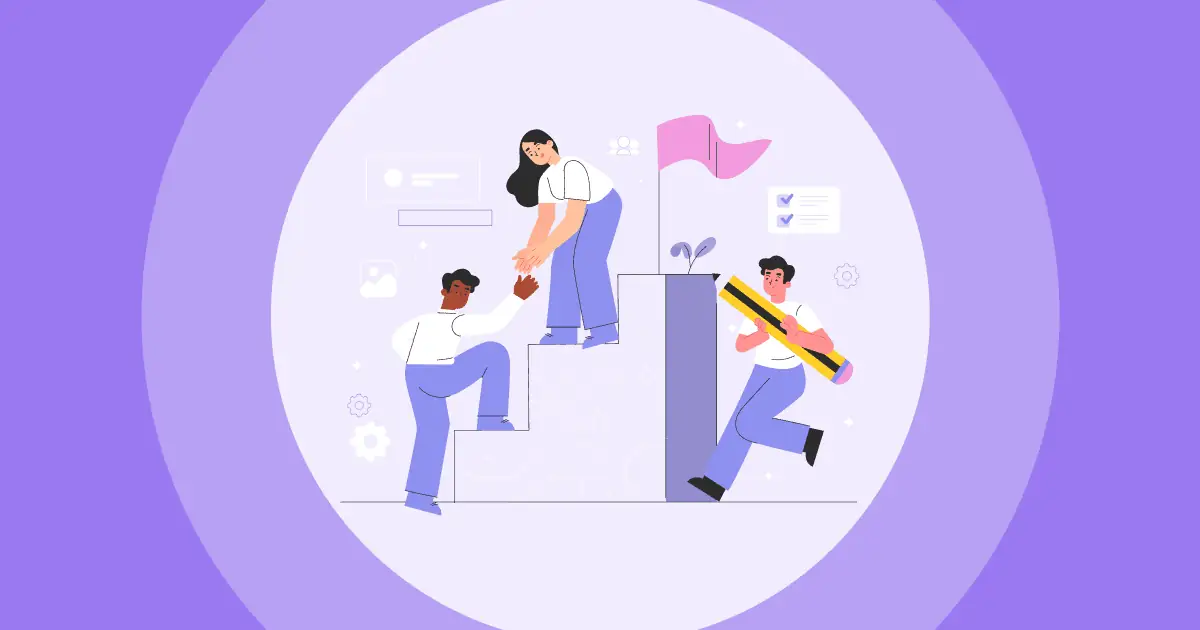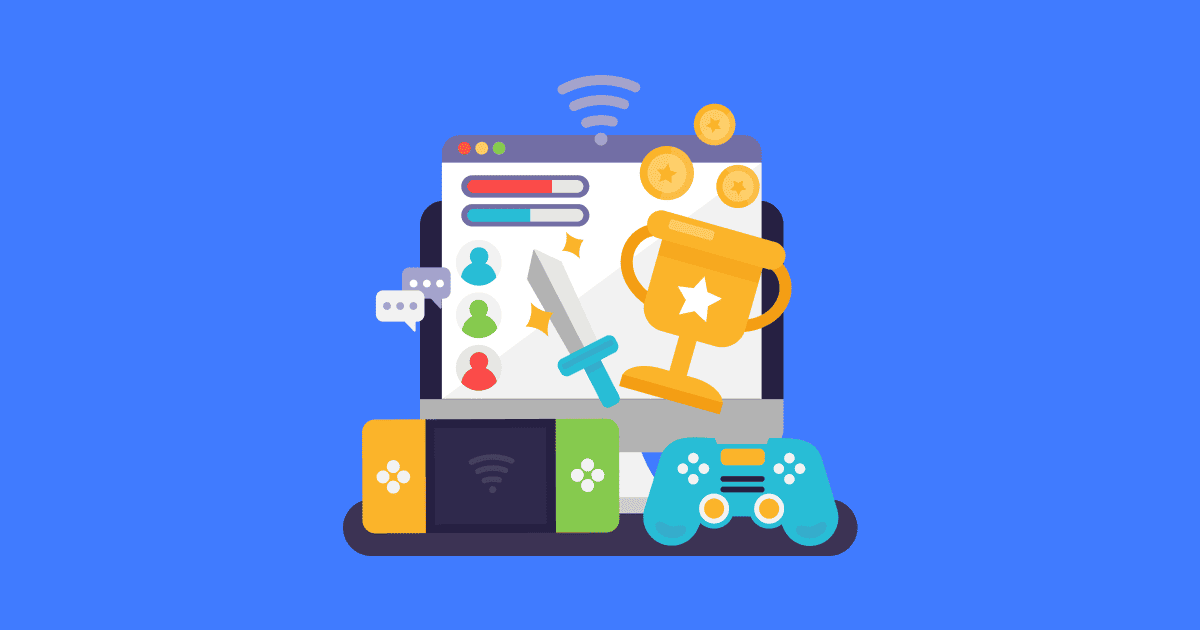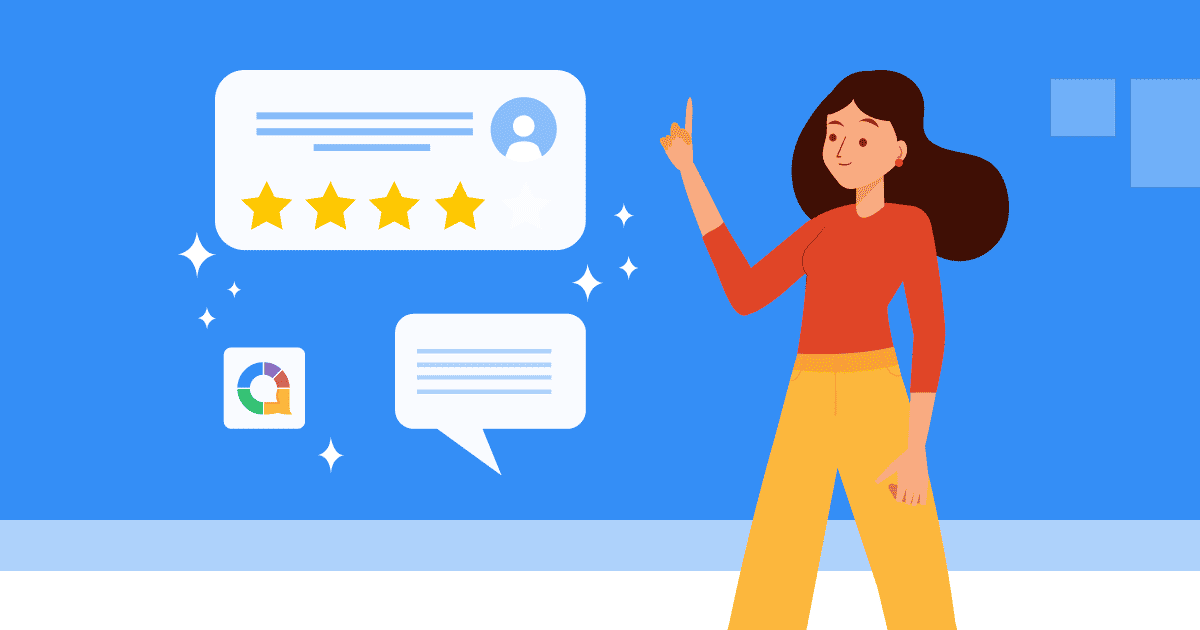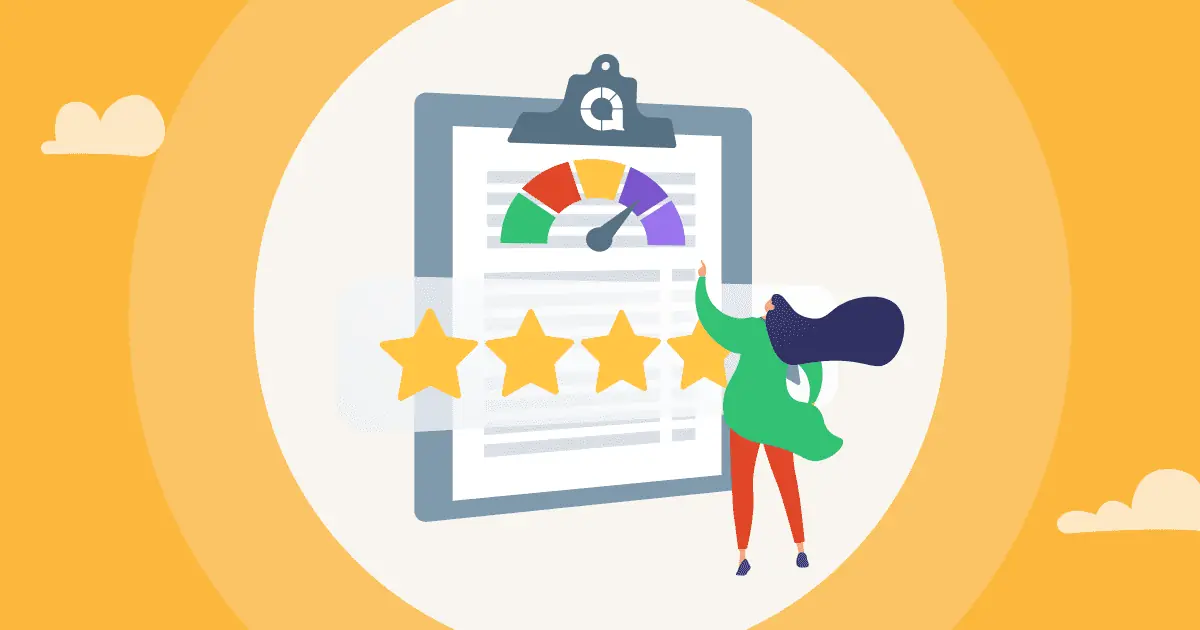Do you know the average human now has an attention span shorter than that of a goldfish? There are just too many distractions around. All the techs in the modern world, the constant pop-up notifications, the short bursty videos, and so on, have kept us from staying focused.
But does that mean humankind cannot digest long and complex information anymore? Absolutely not. However, we might need a little help to fully channel our concentration. Methods such as gamification engage our minds, keep the lectures/presentations fun, and ease knowledge absorption.
Join us in this article as we define gamification and show you how businesses use gamification to its full potential.
Table of Contents
- What is Gamification? How Do You Define Gamification?
- Core Elements That Define Gamification
- Gamification in Action: How Does Gamification Serve Different Purposes?
- Examples of Effective Gamification
- Bottom Up
- Frequently Asked Questions
What is Gamification? How Do You Define Gamification?
Gamification is the application of game design elements and game-related principles in non-game contexts. This action aims to engage and motivate participants toward achieving desired objectives.
At its core, gamification is dynamic and versatile. It is employed across various industries, with endless applications for diverse purposes. Companies use it to stimulate employees, academic institutions use it to educate students, businesses use it to engage customers,... the list goes on.
In the workplace, gamification can increase employee participation and engagement. In training, gamification can reduce training time by 50%.
Core Elements That Define Gamification
Unlike game-based learning, gamification only incorporates several game elements to trigger competition and motivate participants. These elements are common in game design, borrowed, and applied to non-game contexts.
Some of the most popular elements that define gamification are:
- Objectives: Gamification is a tool used to achieve clearly defined goals and objectives. This provides a sense of purpose and direction for participants.
- Rewards: Rewards, tangible or non-tangible, are used to motivate users to perform desirable actions.
- Progression: Gamified programs often include a level or tiered system. Participants can gain experience points, level up, or unlock features as they achieve set milestones.
- Feedback: Elements that inform participants about their progress and performance. It keeps their actions aligned with the goals and encourages improvement.
- Challenges and Obstacles: Challenges, puzzles, or obstacles are designed based on desired goals. This stimulates problem-solving and skill development.
- Social Interaction and Sense of Community: Social elements, such as leaderboards, badges, competitions, and collaboration, encourage social interaction. It establishes relationships and trust among participants.

Gamification in Action: How Does Gamification Serve Different Purposes?
Everyone loves a little game. It taps into our competitive nature, provokes a sense of engagement, and stimulates achievements. Gamification operates on the same basic principle, harnessing the benefits of games and applying them to various domains.
Gamification in Education
We all know how lessons can be dry and complex. Gamification possesses the power to turn education into an interactive and fun activity. It allows students to compete against each other in the name of knowledge, gaining points, badges, and rewards. This motivates students to learn and absorb information better.
Gamification encourages learners to actively participate in their education. Rather than passively receiving lessons from teachers, students are personally involved in the learning process. The fun and rewards that gamification offers also keep students engaged with the materials.
For example, here are some ways you can gamify a learning course for students:
- Add a narrative: Create a compelling story and take your students on a quest. Weave lessons into an epic narrative that will keep their curious minds pondering.
- Use visuals: Make your course a feast for the eyes. Incorporate high-quality visuals, images, and memes if necessary.
- Add activities: Mix things up with interactive quizzes, puzzles, brain teasers or discussion topics. Gamify assignments so students see learning as lively play rather than "work".
- Track progress: Let students track their learning journey. Milestones, levels, and earned badges will nourish that sense of achievement on the road to victory. Some may even find themselves hooked on self-improvement!
- Use rewards: Motivate valiant learners with sweet rewards! Use leaderboards, reward points or exclusive perks to fuel students' quest for knowledge.

Gamification in Workplace Training
Gamification uses elements from game design to boost the effectiveness of employee training. Interactive training modules like simulations, quizzes, and role-playing scenarios lead to better engagement and retention.
Gamified training programs can also be designed to simulate real-life scenarios, allowing employees to practice crucial skills in a safe environment.
Moreover, gamification enables employees to track their learning progress through levels and achievement milestones, allowing them to absorb the materials at their own pace.
Gamification in Marketing
Gamification transforms traditional marketing. It not only enhances the shopping experience but also drives customer engagement, brand loyalty, and sales. Interactive marketing campaigns encourage customers to participate in challenges or games to win prizes, thereby developing a sense of attachment to the brand.
Gamification strategies, when incorporated into social media platforms, can become viral. Customers are encouraged to share their points, badges, or rewards, thus boosting engagement.
Gamified campaigns also generate valuable data. By collecting and processing such numbers, businesses may gain action-driving insights that resonate with customers’ interests.
Examples of Effective Gamification
Feeling a bit overwhelmed? Worry not! Here, we have prepared two real-world applications of gamification in education and marketing. Let’s take a look!
In Education and Workplace Training: AhaSlides
AhaSlides offers a plethora of gamification elements that go beyond a simple, static presentation. Not only can the presenter interact with a live audience to poll, and host a Q&A session with them but also organize quizzes to reinforce learning.
AhaSlides' built-in quiz functionality helps the presenter to add multiple choice, true/false, short answer and other types of questions throughout the slides. Top scores will be displayed on the leaderboard to foster competition.
Getting started on AhaSlides is fairly easy, as they have quite a sizable template library for diverse topics, from lessons to team building.

In Marketing: Starbucks Rewards
Starbucks has done a great job building customer retention and loyalty. The Starbucks Rewards app is a genius move, using gamification elements to encourage repeat purchases and deepen the bond between the brand and its customers.
Starbucks Rewards features a tiered structure. Customers earn stars by making purchases at Starbucks with a registered Starbucks Card or the mobile app. A new tier is unlocked after reaching a set number of stars. Accumulated stars can also be used to redeem various rewards, including free drinks, food items, or customizations.
The more money you spend, the better the benefits. Starbucks also sends out personalized marketing messages and offers based on membership data to maximize customer engagement and repeated visits.

Bottom Up
We define gamification as the process of implementing game-design elements in non-game contexts. Its competitive and entertaining nature has shown incredible potential in transforming how we approach education, training, marketing, as well as other domains.
Moving forward, gamification can become an integral part of our digital experiences. Its ability to connect and engage users on a deeper level makes it a powerful tool for businesses and educators alike.
Frequently Asked Questions
What is gamification in simple words?
In a nutshell, gamification is using games or game elements in non-game contexts to encourage participation and stimulate engagement.
What is gamification as an example?
Duolingo is the best example of how you define gamification in the context of education. The platform incorporates game design elements (points, levels, leaderboards, in-game currency) to motivate users to practice language daily. It also rewards users for making progress.
What is the difference between gamification and gaming?
Gaming refers to the action of actually playing the games. On the other hand, gamification takes game elements and applies them to other scenarios to stimulate a desirable result.








